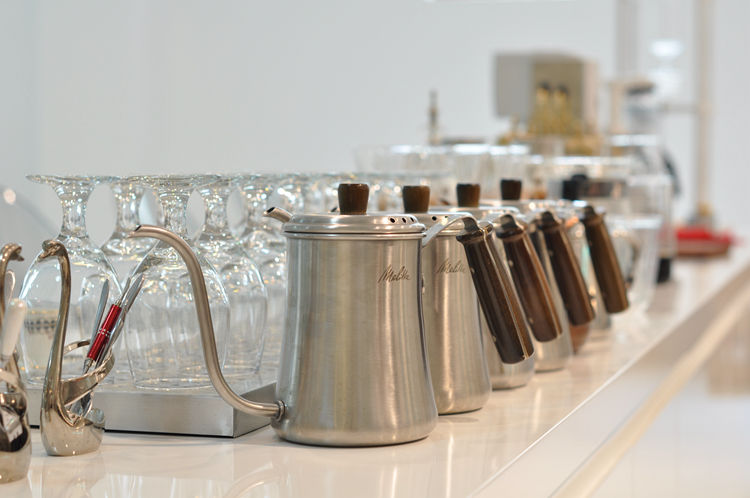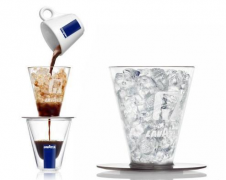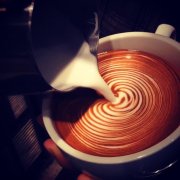Coffee Flavor Wheel and Flavor Spectrum Coffee knowledge
Among all kinds of flavor wheels, coffee is the most esoteric. According to Ivon Flament's "Coffee Flavor Chemistry Coffee Flavor Chemistry", since 1960, scientists have isolated more than 300 compounds from raw coffee beans, and there are more than 850 kinds of ripe coffee beans. Researchers believe that coffee contains at least 1200 volatile, water-soluble, organic and inorganic compounds, far exceeding the 150 to 500 varieties of chocolate and wine. What is even more incredible is that the taste spectrum of coffee will change according to the degree of baking, which can be called a "taste-changing dragon" in the catering industry.
The coffee taste spectrum was drawn by Tedelingo, a senior consultant of SCAA in 1997, and is composed of normal taste spectrum and abnormal taste spectrum. The so-called normal taste spectrum refers to the normal taste spectrum of coffee, while the abnormal taste spectrum refers to the abnormal taste spectrum of raw beans under abnormal conditions, such as improper processing, transportation and storage, resulting in deterioration of coffee protein, organic acids and fats, or improper roasting.
The purpose of "Coffee Flavor Wheel" is to establish the same term of coffee taste spectrum, to assist cup testers or professionals to further understand the connotation of coffee aroma and taste, and to describe the sensory understanding of coffee in the future, so as to have a common language.
In order to facilitate the analysis, the Coffee Flavor Wheel is disassembled into two fan-shaped diagrams. This issue will first introduce the "odor spectrum".
Coffee taste spectrum consists of "smell spectrum" and "taste spectrum"; the former directs dry and wet fragrance, while the latter refers to water-soluble taste. The aroma of "odor spectrum" is appreciated by the sense of smell before and after the nose, and the liquefaction taste of "taste spectrum" is captured by the sense of taste. The "smell" and "taste" of coffee often vary with variety, altitude, soil and water, producing area, post-preparation, extraction and roasting degree, but the biggest cause depends on the roasting degree and technology.
The baking degree determines the trend of taste spectrum.
A. "shallow baking": from the middle of the explosion to the end of the explosion, Agtron#75-#66.
Most of the aromatic compounds formed by "shallow baking" are low molecular weight compounds, and the aroma and taste are easy to identify, including sour aroma, herbs, cinnamon, nutmeg, shell, nuts and toast, with the lightest weight and the highest volatility. The flowers of coffee
The sour aroma is the product of "enzyme action", while the smell of shell and bread is the smell in the early stage of Mena reaction in the baking process. The two construct the main taste spectrum of shallow baking.
B. "medium roasting" means Agtron#65-#55 from the end of the first explosion to before the second explosion.
The aromatics of "medium baking" are mainly medium molecular weight compounds with slightly higher mass and moderate volatility, mainly furan compounds (Furan) and pyrazine compounds (Pyrazine), and also have the characteristics of rising into the nasal cavity, which is the mid-term product of caramelization and Mena reaction in the baking process. The aroma is dominated by caramel, cream sugar and chocolate. Although medium baking still has sour flavor, nutty and toast flavor, it is obviously weaker than "light baking".
C. "medium-deep roasting" refers to the violent explosion from the first to the middle of the second explosion, Agtron#54-#40.
D. "Deep roasting" means two exploding tails, Agtron#40-#30.
The aromatics of "medium and deep baking" and "deep baking" are high molecular weight compounds with higher mass than the former two, with low volatility and almost no sour fragrance. They are the products of dry distillation at the end of baking, mainly mercaptan, resin, tar and phenolic compounds, and can be summarized as turpentine, alcohol, tar, choking incense, and the sweet and bitter taste of caramel and caramel.
Three sources, nine charm
After baking, raw beans produce many odors that promote and suppress each other, including fruit, caramel, cream, resin, wine, rice and wheat, stew, pepper, pizza and spice. It is difficult to find a main flavor for coffee
Therefore, the sources of coffee aroma can be divided into three categories: "enzyme action", "sugar browning reaction" and "dry distillation".
a. Shallow baking highlights the "enzyme effect":
1. "Hua Yun", 2. "Fruit Rhyme", 3. "Herbal Rhyme".
b. Medium baking highlights the "sugar browning reaction":
1. "Nut rhyme", 2. "caramel rhyme", 3. "Chocolate rhyme".
C deep baking highlights "dry distillation":
1. "resin rhyme", 2. "Xin Xiang Yun", 3. "charcoal burning rhyme".

Important Notice :
前街咖啡 FrontStreet Coffee has moved to new addredd:
FrontStreet Coffee Address: 315,Donghua East Road,GuangZhou
Tel:020 38364473
- Prev

Ice drop coffee delicious ice coffee ice drop coffee making
First, ice drop coffee, cold coffee actual combat teaching! What is ① iced coffee? What is the difference between ② chilled, cold bubble and ice droplets? How to extract ③ ice drop coffee? How does ④ make iced coffee at home? ⑤ ice drop appliance reward 01 what is ice drop coffee? Ice drop coffee water-drip coffee, also known as Dutch coffee (Dutch coffee). It is said to be because when
- Next

The correct method of filling Italian Coffee
When making Espresso filling powder, ideally, the coffee powder is evenly distributed before pressing, and then pressed. The coffee powder has a flat surface and uniform density, so that the water extracted from the coffee can pass through evenly. Extract all the aromatic components from the coffee powder. The coffee powder is pressed too loosely. After the extraction, there must be a perforated hole in your pressed powder. If the pressure is too tight, pressed powder
Related
- Beginners will see the "Coffee pull flower" guide!
- What is the difference between ice blog purified milk and ordinary milk coffee?
- Why is the Philippines the largest producer of crops in Liberia?
- For coffee extraction, should the fine powder be retained?
- How does extracted espresso fill pressed powder? How much strength does it take to press the powder?
- How to make jasmine cold extract coffee? Is the jasmine + latte good?
- Will this little toy really make the coffee taste better? How does Lily Drip affect coffee extraction?
- Will the action of slapping the filter cup also affect coffee extraction?
- What's the difference between powder-to-water ratio and powder-to-liquid ratio?
- What is the Ethiopian local species? What does it have to do with Heirloom native species?

